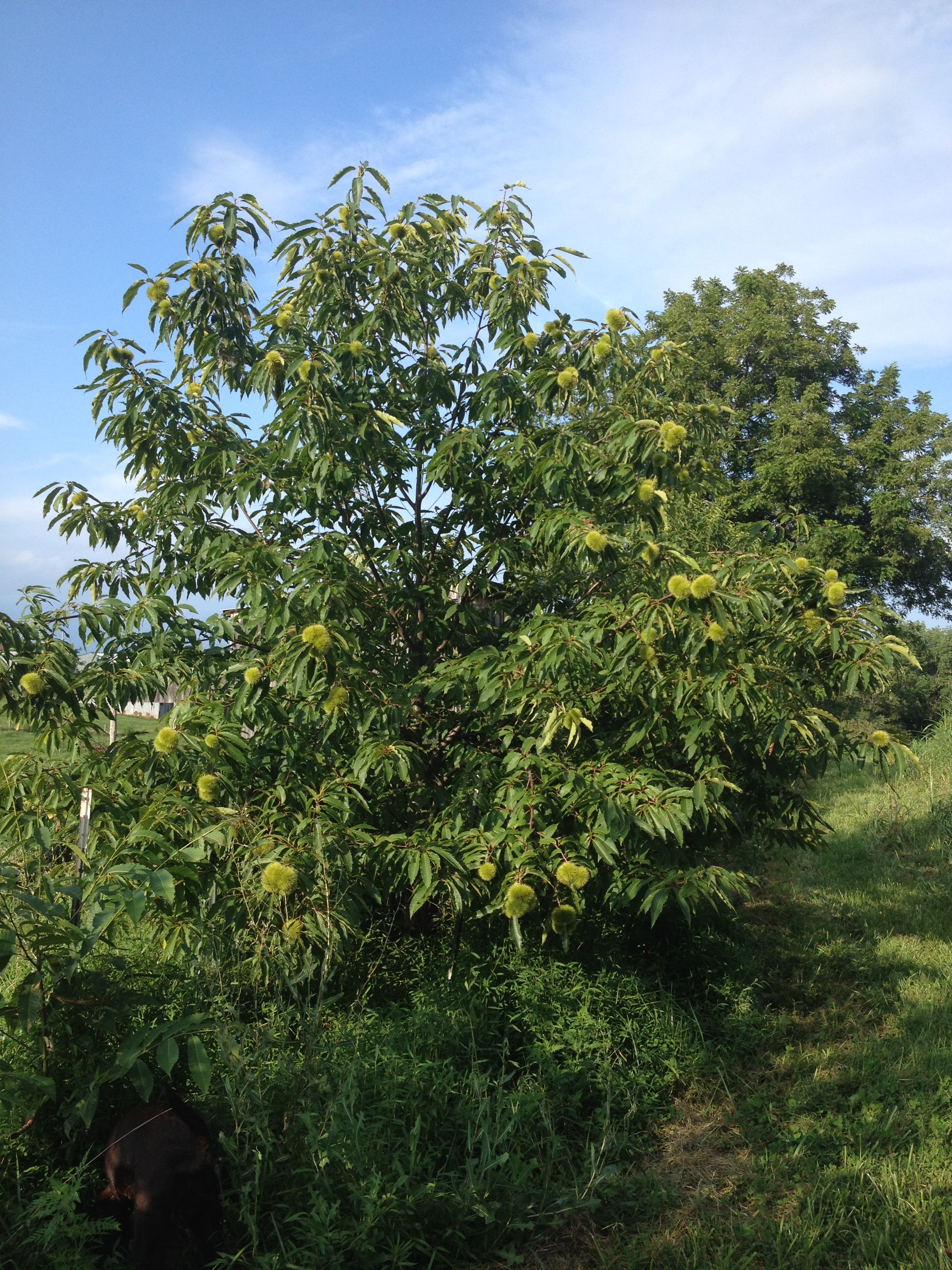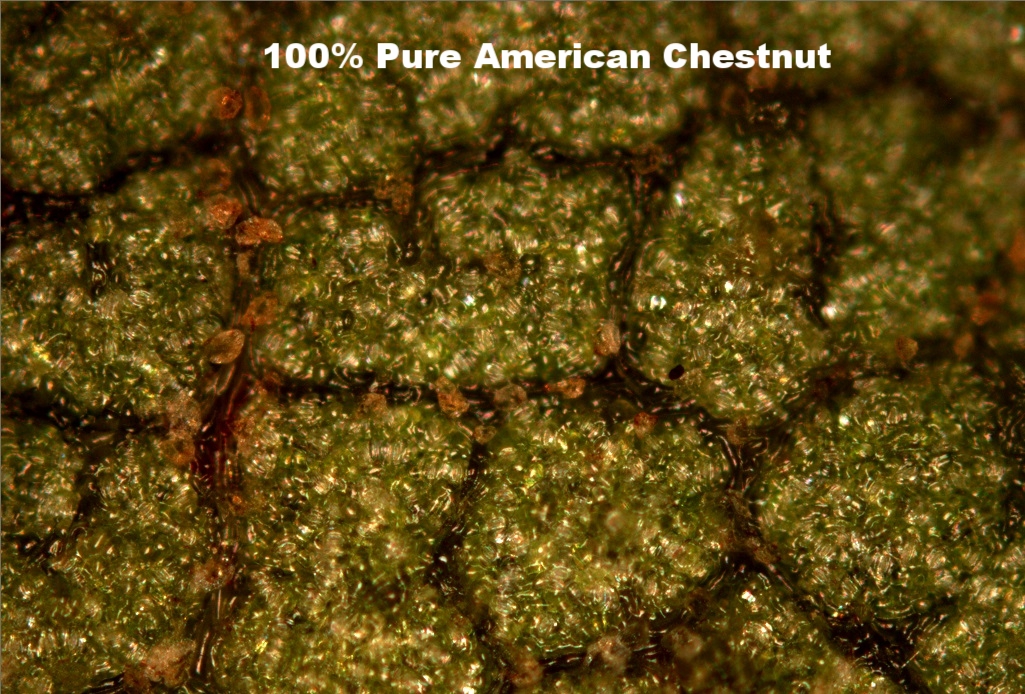The American Chestnut
American Chestnut
The American Chestnut was the apex tree of the eastern hardwood forest. It has been said that a squirrel could travel from Georgia to Maine jumping from tree top to tree top just on American Chestnut trees! This magnificent tree has been reduced to an understory tree by a microscopic foe called the chestnut blight fungus that was brought over to the United States in the early 1900s from Asia. The original tree could grow well over one hundred feet tall with five feet diameter or more in trunk diameter. The wood split easily with a density of grain to yield a high energy output when burned along with a beautiful deep grain for woodworking. Uses for the wood were as diverse as barn lumber, split rail fencing, to furniture making. It was always said that a chestnut tree could carry a man from the cradle to the grave. The wood was not the only value driven part of this special tree, the other half of the story was it's fruit.
The chestnut itself sustained enormous amounts of life. There is really no calculation of the damage incurred by the loss of this tree. Wildlife, such as a number of voles, went extinct from the loss. What else? What about the bird species or other mammals? Billions of insects visited the flowers each year, how did it affect them? It just simply is not known. During the same period of losing the chestnut trees there was a mass migration of squirrels looking for food. As a matter of fact people used to say you could walk across the squirrels crossing the Ohio River. The nut itself is very different than other tree nuts in its composition. It is not an oily nut, but instead drys hard like a grain (can be stored for years). Some people have referred to the chestnut as grain that grows on trees. This enables the nut itself to be used very differently than other nuts. It can be ground into flour to be used in cookies, cakes, pies, dressing- anything that uses flour. The nut can be roasted, boiled, boiled and pureed into a cream, and even turned into a luxurious candy the Europeans call a marron glaces. The chestnut tree is a very dependable producer and very versatile for human consumption. These silent losses are going on even today (Eastern Hemlock, Dogwood, Hellbender are a few of examples), and have an enormous impact on our environment. I have shed some tears over the 300 year old hemlocks in the rich, fertile valleys of the Appalacian Mountains - just wondering what was going to feed and protect the grouse during the heavy snow? Will we lose the drumbeat of them too? Unfortunately, they don't have a voice.





























































